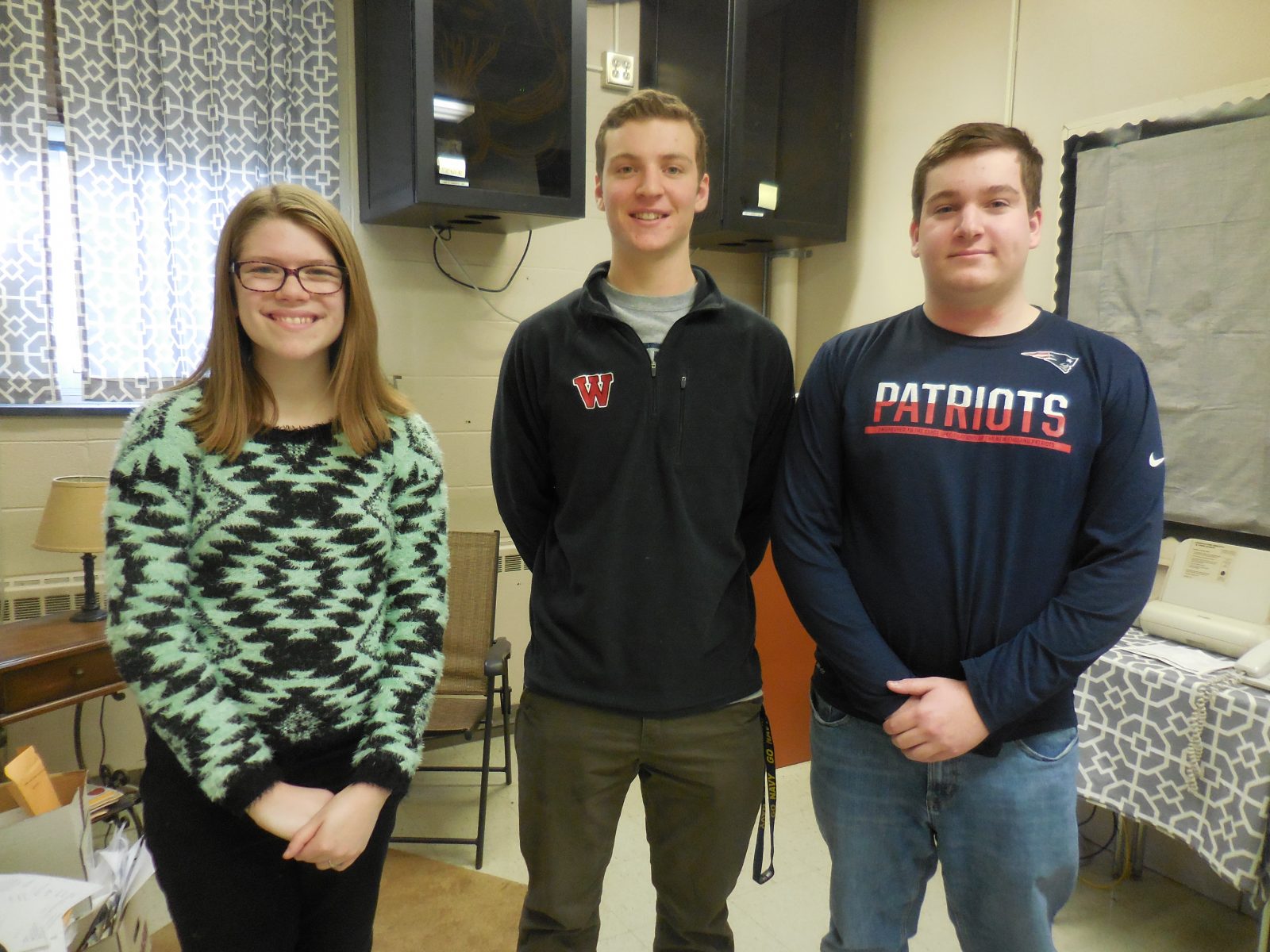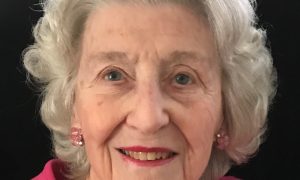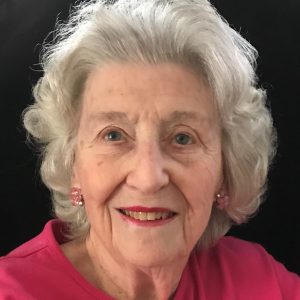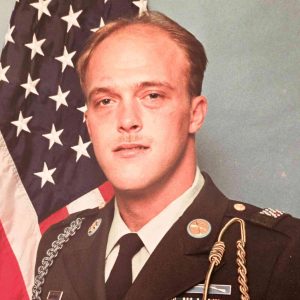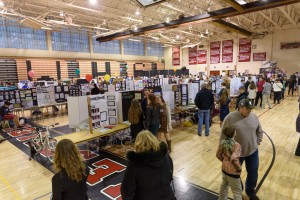
Westfield High School Science Fair in 2016. (WNG File photo)
WESTFIELD – Next week, Westfield High School will be holding its Annual Science and Engineering Fair, which is open to the public on Thursday, February 8 from 5:00 to 6:30 p.m. in the gymnasium. Over 200 science projects by 325 students (grades 9-12) will be displayed at booths, where the students, in teams and individually will explain their projects and process. Also on display will be science-inspired art projects by WHS art students.
“We are actually promoting STEAM (rather than STEM). STEAM also incorporates Art Education in addition to Science, Technology, Engineering, and Math,” said Science Department Chair Donna McKay, who coordinates the fair with teachers Renee Sweeney and Debra Aldrich.
McKay said three prizes are awarded at the high school fair. First place winners receive a $300 Amazon gift card; second place, a $200 Amazon gift card, and third place, a $100 Amazon gift card. The top twelve projects and alternates then advance to the Region I Fair at the Massachusetts College of Liberal Arts in North Adams.
“Last year, they allowed us to send nineteen projects. At regionals, thirteen of these projects received first, second or third place (there are multiples given of each), and three projects were given honorable mention. All of these projects went on to compete at the State Science Fair hosted by the Massachusetts Institute of Technology in Cambridge,” McKay said.
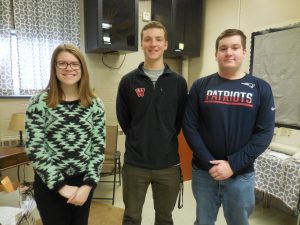
WHS Seniors Kristen Stawasz, Zachary Medeiros and Liam Coffey will participate in their fourth WHS Science Fair on Feb. 8. (Photo by Amy Porter)
A few students at the state level will also be invited to the international level of competition in Los Angeles. Last year, WHS senior Kristen Stawasz earned a first place at the regionals with her project, “The Effect of Wi-Fi on Plant Health,” which she used to postulate the effect of modern technology on the environment. She also won third place at the State Science Fair, and was chosen to compete at the international competition.
“It was incredible,” Stawasz said of the internationals. “I thought we would be listening to lectures all the time, but they balanced it with fun stuff.” She said one night they rented out a night club and the Grammy museum just for the 1800 science fair competitors.
Stawasz said that she didn’t expect to win anything big for her project, “after seeing the projects from the eastern part of the state, never mind other states.” However, she did win an honorable mention from the American Statistical Association in Los Angeles.
This year, her fourth competing in the WHS Science Fair, Stawasz has designed an inexpensive rapid result test kit to test the level of lead in drinking water. She explained that the chamber for testing is the syringe, where a chemical reaction turns it into solid. By measuring the volume of the solid, “you can tell whether it is above or below the legal limit of lead,” she said.
Other previous winners participating this year are seniors Liam Coffey and Zachary Medeiros who worked on their projects all four years as a team. Two years ago as sophomores, they won first place in the high school science fair for “Using the Magnus Effect to Improve Efficiency of Aircraft Propulsion,” which postulated whether rotating cylinders would make a drone fly more efficiently than propellers. They also came in second at regionals, and advanced to the state competition, as they have done every year.
For this year’s project, Coffey and Medeiros developed nose cones to increase the energy output of wind turbines. “We both agreed one of the number one contributors to global warming is energy production,” Coffey said. The goal was to improve green energy by making it more cost effective. “We developed our own special type of nose cone that out produced the standard nose cone by seven percent in energy production,” he added.
The team began their research in August after Coffey visited the Barnes International Air Show, where he saw an Apache Attack helicopter with a dome on top of the propellers to create more torque. “That’s what inspired us,” Coffey said.
“In terms of energy production, seven percent could have a huge impact,” Medeiros said. He said wind power is not being used more, because it is not very efficient in terms of energy production. He said the cone could be useful in acquiring more clean energy production,
“That’s the best way to get motivated about a project, when you feel it could have an immediate impact,” Medeiros said.
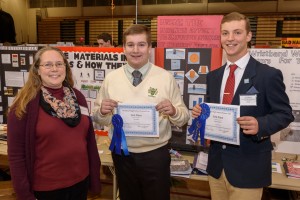
In 2016, Liam Coffey and Zachary Medeiros won first place at the WHS Science Fair. Pictured here receiving their awards with physics teacher Renee Sweeney, co-coordinator of the fair. (WNG File Photo)
Coffey’s top pick for colleges is Westfield Polytechnic Institute in Worcester for aerospace engineering, where he has been accepted. Medeiros has been accepted into the U.S. Naval Academy, where he plans to study political science and international relations. He said he may not be doing science there, but said, “I can contribute to laws that make it easier to build clean energy infrastructure.”
Coffey said that difference is what makes theirs a good partnership. “Zach is able to sell it. I bring more of the conceptual knowledge,” he said.
“Liam is definitely good at breaking complex problems down. That’s why we make a good team,” Medeiros said.
Although Stawasz isn’t certain about which college she will be attending next year, she plans to go on to graduate studies in astrophysics, and hopes to work for NASA one day.
All three of them said that the WHS Science Fair, one of the few high school science fairs in the area, is challenging for students. While it is open to all students at Westfield High School; students in grades 9-12 who are enrolled in any Advanced Placement or Pre-AP science course are required to participate. The projects are graded by teachers, and represent 10% of their grade each of the four terms.
“We all complain about Science Fair,” Stawasz said, adding, “It has offered me endless opportunities.” She said the hands-on research is what colleges like to see, plus the opportunity to win money and other perks, like the week of classes she took at MIT. She also spoke about the friends she made at the international competition, with whom she keeps in touch. “The rewards you get from it are indescribable,” Stawasz said.
“I also found Science Fair to be draining,” Coffey said, adding, “Without Science Fair, I probably wouldn’t be able to go to a college like WPI and study engineering. It’s helped me with time management, problem-solving skills and creativity.”
“Science Fair is a love-hate relationship, a little too much of a burden to put on students,” Medeiros agreed. “This final project made me realize how much better I’ve gotten at research and time management. It’s the hardest assignment of each year,” he added.
Medeiros said that’s pretty much the consensus among all of the students in the school. “Some say they hate it, but in the end, we all take away something positive from Science Fair,” he said.
“One of my favorite things is going around to other projects. You learn so much from your peers. It is truly incredible what people our age are doing to change the world,” Stawasz said.
McKay said they are still accepting judges for the Science Fair. Judging takes place during the school day on February 8, and judges are treated to a catered lunch prepared by culinary art students, with entertainment by band and choral students. Anyone interested in judging, should email McKay at [email protected]. She said this year they have some judges who have previously participated as students in the fair.
“I believe it is our responsibility to promote authentic learning as so many students that do pursue their science education after high school drop out of the field during college,” McKay said.

